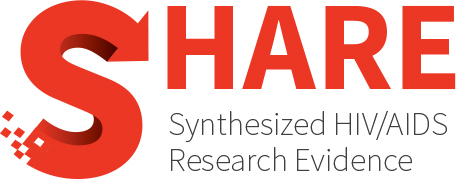Category Archives: Prevention, Engagement and Care Cascade
First line antiretroviral treatment failure and its association with drug substitution and sex among children in Ethiopia: Systematic review and meta-analysis
Antiretroviral Treatment (ART) has significantly decreased HIV-related morbidity and mortality among children despite the issue of drug resistance and subsequent treatment failure appearing as a challenge. Different studies have been...
Peer education interventions for HIV prevention and sexual health with young people in Mekong Region countries: A scoping review and conceptual framework
WHO-recommended rights-based approaches to sexual health emphasise participatory and youth-centred processes. Among these, peer education (PE) interventions are commonly used to promote HIV prevention and sexual health for young people,...
Effectiveness and safety of statins on outcomes in patients with HIV infection: A systematic review and meta-analysis
Statins are hypolipidaemic in human immunodeficiency virus (HIV) positive individuals. However, their effect on all-cause mortality and rate of discontinuation is unclear. We conducted a systematic review to evaluate the...
Body image in children and adolescents diagnosed with the human immunodeficiency virus: A systematic review
CONTEXT: The relationship with body image, which is the way the body presents itself to each subject, can be aggravated in children and adolescents diagnosed with an human immunodeficiency virus...
Barriers to uptake of long-acting antiretroviral products for treatment and prevention of human immunodeficiency virus (HIV) in high-income countries
Long-acting injectable antiretroviral therapy (LAI-ART) for the treatment and prevention of human immunodeficiency virus (HIV) holds great potential to shift treatment paradigms by offering an alternative to daily oral medication....
Review of antiretroviral therapy coverage in 10 highest burden HIV countries in Africa: 2015–2020
Africa is responsible for two-thirds of the global total of new HIV infections. South Africa, Nigeria, Mozambique, Uganda, Tanzania, Zambia, Zimbabwe, Kenya, Malawi, and Ethiopia were responsible for 80% of...
Why do men who have sex with men practice condomless sex? A systematic review and meta-synthesis
BACKGROUND: Despite a large amount of behavioral interventions to reduce human immunodeficiency virus (HIV)-related high-risk sexual behaviors, consistent condom use remains suboptimal among men who have sex with men (MSM)....
Antiretroviral drugs for treatment and prevention of HIV infection in adults: 2022 Recommendations of the International Antiviral Society-USA Panel
IMPORTANCE: Recent advances in treatment and prevention of HIV warrant updated recommendations to guide optimal practice. OBJECTIVE: Based on a critical evaluation of new data, to provide clinicians with recommendations...
Barriers and facilitators to the implementation and scale up of differentiated service delivery models for HIV treatment in Africa: A scoping review
BACKGROUND: In the face of health-system constraints, local policymakers and decision-makers face difficult choices about how to implement, expand and institutionalize antiretroviral therapy (ART) services. This scoping review aimed to...
Transition interventions for adolescents on antiretroviral therapy on transfer from pediatric to adult healthcare: A systematic review
Globally, adolescents living with HIV (ALHIV) experience poor health outcomes such as low retention in care, ART non-adherence and viral non-suppression. These outcomes coincide with the period during and after...
Educational technologies for HIV prevention in Black people: Scope review
OBJECTIVE: To map the educational technologies implemented for HIV prevention in black people. METHOD: Scope review, performed according to the recommendations of The Joanna Briggs Institute, in Medline/PubMed, Embase, LILACS,...
Substance use and adherence to HIV pre-exposure prophylaxis in studies enrolling men who have sex with men and transgender women: A systematic review
Optimal adherence to pre-exposure prophylaxis (PrEP) is critical, but challenging. Men who have sex with men and transgender women have high rates of HIV incidence and substance use. Substance use...
